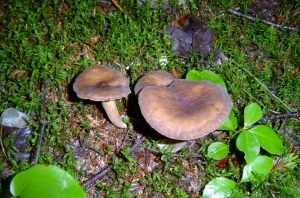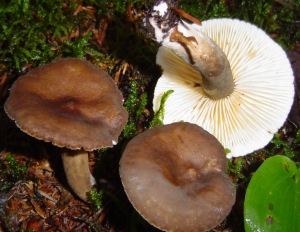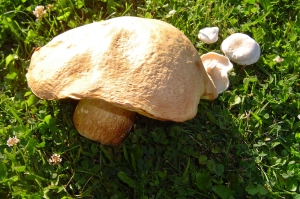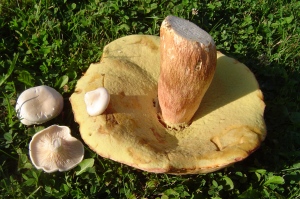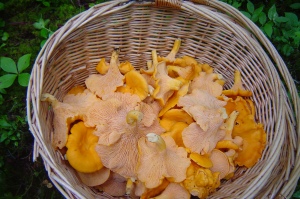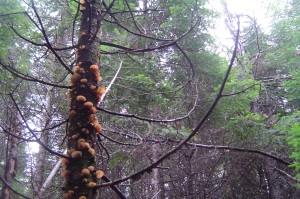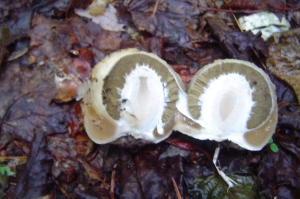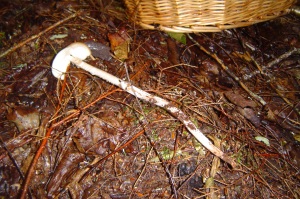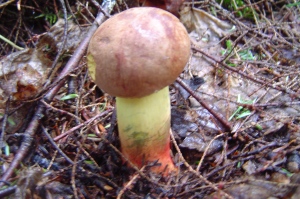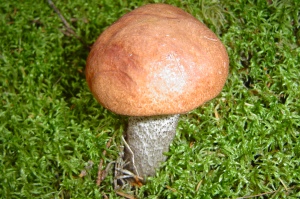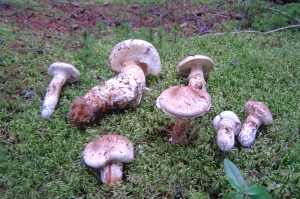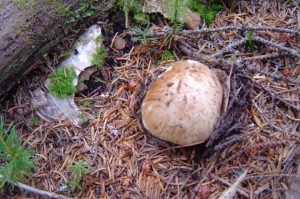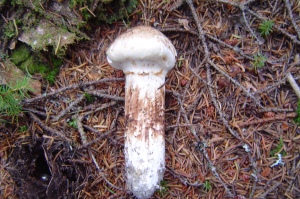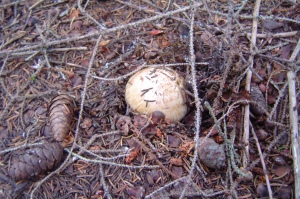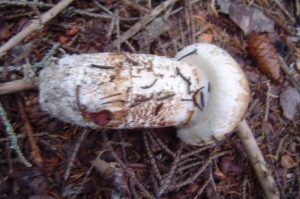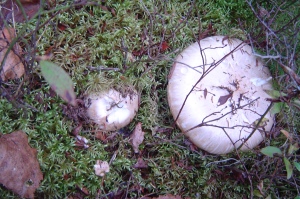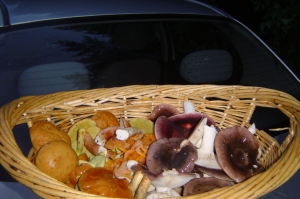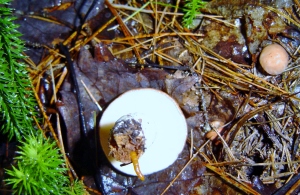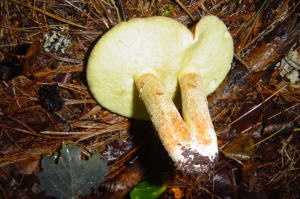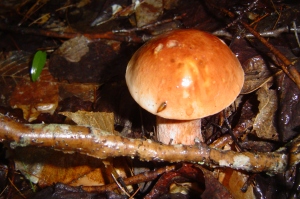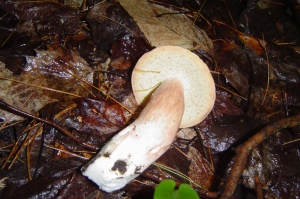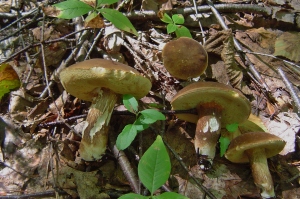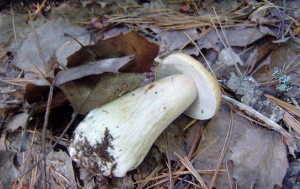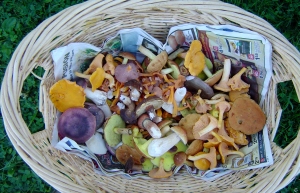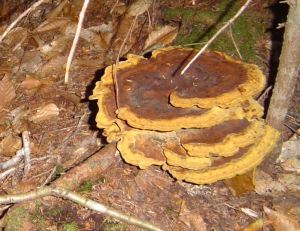
Starting on the evening of Friday the 27th of September 2013 and ending around noon on Sunday the 29th the Nova Scotia Mycological Society will be holding their annual wild mushroom foray near Berwick NS. Here is the address if you would like more info www.nsmushrooms.org/forays/2013 Judging by soil maps and the forest types in the foray’s surrounding areas this should provide the society with quite a few new species to add to their already impressive list of species in N.S. Check out their site, you’ll be pleasantly surprised with what you will see there, they offer a great deal and a good opportunity to enjoy and learn on the trails and back at the Identifying tables at the campsite. (Photo above) Dyer’s polypore, Phaeolus schweinitzii
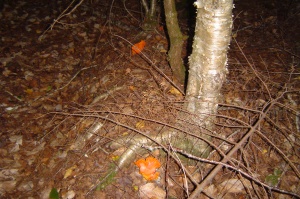
I did a little (Foray it’s Friday) myself tonight and here are some photos, you’ll see lots of mushrooms similar to these at the NS foray plus many more. One of the first mushrooms I seen on my walk this evening were these Lobster mushrooms.
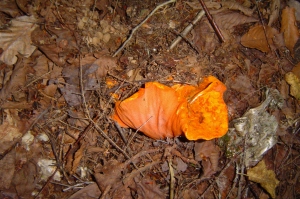
This one weighed around 12 ozs
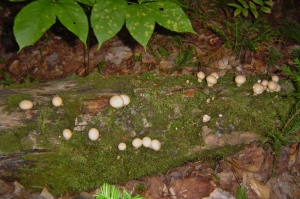
I walked for an hour through these woods and here are just a few of the ones I photographed in order as I found them, here we see some Pear-shaped Puffballs.

Next a stranger to me, looks like a very dark capped Amanita, but with all wild mushroom and especially the Amanitas you are best to not guess. I may dry these to sent away for identification.
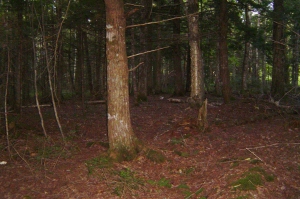
You will need to click on to enlarge this photo, the white mushrooms far off in the distance are the very common Destroying Angel which is another member of the Amanita family which host many of the Maritime provinces most poisonous mushrooms.
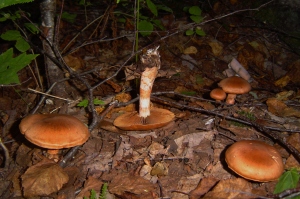
This is one of our most common early fall mushrooms, Cortinarius Armillatus which isn’t very tasty and mistaken identity in the Cort family can be a life threatening experience. This mushroom known as the Bracelet Cort is best left off your edible list.
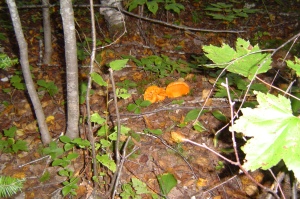
More Lobster mushrooms.
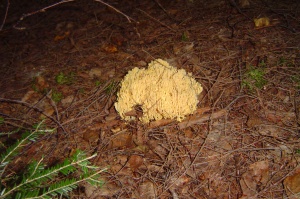
Here is a large coral mushroom, this may be or may not be a variety of Ramaria flava, I’ll dry and send some of this mushroom away for identification.

Forays are not all about mushrooms, I found this birch tree quite frilling as well.

Here I see a tree with what appears to be plenty of Chaga mushroom on it about 300 feet away with my car visible a 1,000 feet away in the light green area noticeable near the bottom of the tree trunks. You’ll need to click on this to see anything on this one.
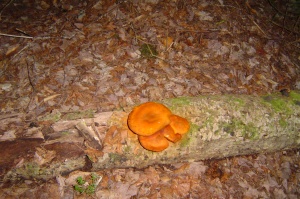
So the tree did actually have some Chaga on it but only a very small horn so now I’m heading towards the car and see this very large bright capped mushrooms growing on this downed log, don’t know this one, I touched the underside of the cap and my hand was quickly stained with a reddish-brown watery powder, interesting stuff out here.
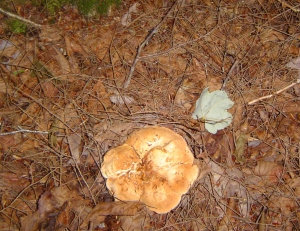
Around 400 feet from the car and now I find a nice surprise edibility wise.

Sweet Tooth or AKA Hedgehog mushrooms these are the largest ones I gathered this year. As far as wild edible mushrooms go I did very well ending up with around 5 lbs of Lobster and Hedgehog mushrooms.
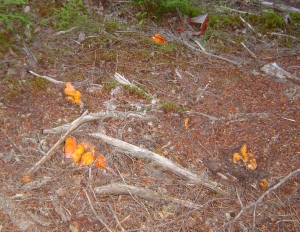
Across the street from my car here are a few lbs of Lobster mushrooms and these are the ones you should not gather for food. For every pound of wild mushrooms I gather for food or medicinal use I walk by double that number of pounds of the same species due to them being in areas where they may accumulate toxins. The wild mushrooms you can see from your car while driving are great for indicating a mushroom is available in that area but again leave them there to spread spores and indicate good gathering grounds.
If you have hung around to make it to the end of my Friday night foray, thanks for the company and maybe we will meet again at the NS Mycological Society’s foray in a few weeks. ciao
Tags: Dyer's polypore, lobster mushroom, NB wild mushrooms, NS mushroom foray, Phaeolus schweinitzii, sweet tooth mushroom, wild mushrooms moncton
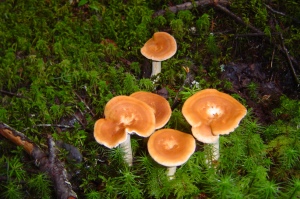 Gathering lots of mushrooms lately with all the rain recently and haven’t posted or viewed much in quite awhile so time to catch up on things here, the little mushrooms above are Hydnum umbilicatum, the (little hedgehog) which I usually do not noticed till Oct though this year they are common in mixed woods with mossy floors. They are a tiny mushroom and quite tasty with a nice crunchiness and usually grow in large groups.
Gathering lots of mushrooms lately with all the rain recently and haven’t posted or viewed much in quite awhile so time to catch up on things here, the little mushrooms above are Hydnum umbilicatum, the (little hedgehog) which I usually do not noticed till Oct though this year they are common in mixed woods with mossy floors. They are a tiny mushroom and quite tasty with a nice crunchiness and usually grow in large groups.

